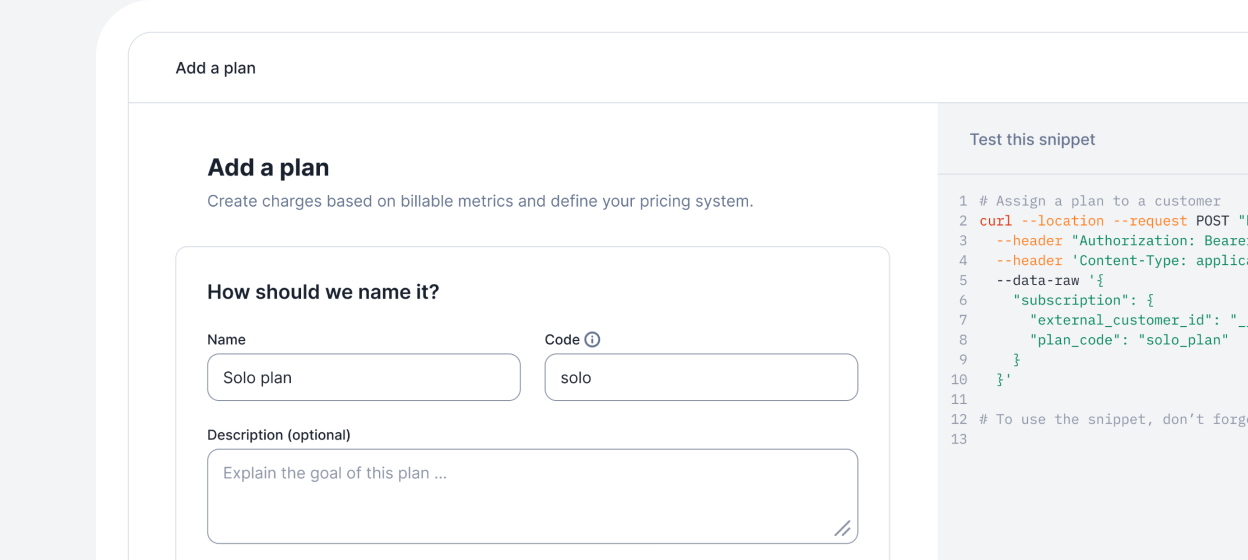Pricing psychology: SaaS pricing strategies that make users buy

Usage-based pricing adoption has reached 41% of SaaS companies in 2023, with hybrid pricing models that combine usage and subscription components becoming the dominant trend [1]. Understanding the psychological principles that drive effective usage-based pricing decisions enables SaaS and AI companies to create compelling strategies that maximize both customer adoption and revenue growth.
This guide explores how psychological pricing principles apply specifically to usage-based pricing models, providing practical frameworks for implementing consumption-driven strategies that feel intuitive to customers while driving sustainable business outcomes.
How psychological pricing strategies drive usage-based adoption
Effective usage-based pricing taps into predictable patterns of human decision-making to make consumption-based models feel logical, fair, and compelling. The goal isn't manipulation, but creating clarity that guides customers toward the pricing structure that best serves their needs.
Price anchoring in usage-based models
The first consumption tier or usage example customers see establishes a mental benchmark against which all other pricing appears reasonable. For usage-based pricing, anchoring works differently than traditional subscription models.
High-volume anchoring example:
- Display enterprise consumption: "Process 50M API calls/month for $0.002 per call"
- Standard usage appears accessible: "Process 100K API calls/month for $0.01 per call"
- Entry tier feels minimal: "First 10K API calls free, then $0.015 per call"
Value metrics like tokens processed, inference seconds, or API calls create natural anchoring opportunities by showcasing enterprise-scale consumption first .
The decoy effect in consumption tiers
Usage-based pricing creates unique opportunities for decoy positioning through consumption breakpoints and per-unit pricing structures.
Consumption decoy structure:
- Basic: 50K API calls at $0.020 per call ($1,000/month)
- Standard (Decoy): 100K API calls at $0.018 per call ($1,800/month)
- Professional: 100K API calls + premium features at $0.015 per call ($1,500/month)
The Standard tier makes Professional appear exceptional value, driving customers toward higher-margin premium features while increasing consumption.
Psychological barriers to usage-based adoption
Usage-based pricing means billing amounts vary month-to-month, creating cost unpredictability that customers may find concerning [2]. Psychological strategies address these concerns:
Predictability anchoring: Provide consumption forecasting tools showing "typical customer usage ranges" Control mechanisms: Offer real-time usage dashboards, spend alerts, and hard limits so buyers stay in control Value demonstration: Connect usage metrics directly to business outcomes customers achieve
Usage-based pricing psychology for SaaS and AI products
SaaS application layer considerations
With AI advancement, usage-based pricing has arrived at the application layer, though apps often include usage via credits or hybrid pricing to keep interfaces simple .
Psychological framing for SaaS:
- Outcome-based messaging: "Pay for results generated" rather than "Pay per API call"
- Success-aligned pricing: Usage increases correlate with customer business growth
- Transparent value exchange: Clear connection between consumption and business impact
AI product consumption psychology
AI products create unique psychological considerations due to variable computational costs and outcomes.
AI pricing psychology principles:
- Token-based clarity: Make computational consumption understandable through relatable metrics
- Outcome anchoring: Frame pricing around business results rather than technical resources
- Predictable bursting: Allow consumption spikes while maintaining cost control
Example: AI Content Generation Service
- Starter: 10K tokens/month ($29) - "Create 50 blog posts monthly"
- Growth: 100K tokens/month ($199) - "Scale content for growing audience"
- Business: 1M tokens/month ($899) - "Enterprise content operations"
Hybrid model psychological advantages
Hybrid approaches maintain stable recurring revenue while capitalizing on high-usage opportunities [3], addressing psychological concerns about cost unpredictability.
Psychological benefits of hybrid pricing:
- Base subscription comfort: Familiar recurring fee reduces adoption friction
- Usage upside opportunity: Customers see expansion potential without commitment fear
- Value alignment: Pay-as-you-grow model feels inherently fair
Practical implementation of psychological usage-based pricing
Tier structure psychology
Tiered pricing remains the most common SaaS model [2], and psychological principles enhance usage-based tier effectiveness.
Psychological tier design:
- Good-Better-Best positioning with clear consumption breakpoints
- Most Popular badges on target usage tiers to guide selection
- Volume discount visualization showing per-unit cost reduction
- Upgrade path clarity demonstrating natural progression routes
Consumption metric selection psychology
Choose usage metrics that feel directly connected to customer value rather than technical infrastructure costs.
Customer-centric metrics:
- Developer tools: "Projects deployed" vs "CPU hours consumed"
- Analytics platforms: "Insights generated" vs "Data rows processed"
- AI services: "Documents analyzed" vs "Inference operations"
Usage-based pricing ensures customers pay in proportion to value received, fostering fairness and enhancing satisfaction [4] when metrics align with outcomes.
Onboarding and adoption psychology
Usage-based pricing reduces upfront costs, making it easier for customers to test products without significant initial investment [5].
Psychological onboarding strategies:
- Free usage tiers for risk-free initial adoption
- Consumption forecasting tools reducing uncertainty anxiety
- Success-based messaging connecting usage growth to business outcomes
- Transparent billing with real-time consumption visibility
Common psychological challenges in usage-based pricing implementation
Overcoming cost unpredictability concerns
Challenge: Customer usage patterns fluctuate with market dynamics and seasonal trends, creating unpredictable demand that threatens consumption-based pricing adoption [6].
Psychological solutions:
- Spending controls: Hard limits preventing unexpected overages
- Predictive analytics: Historical usage patterns for forecasting
- Graduated pricing: Gentle tier progression reducing cost shock
- Success framing: Position higher usage as business growth indicator
Managing analysis paralysis in complex usage models
Traditional tiered pricing prevents analysis paralysis through limited options. Usage-based pricing can create complexity that inhibits decision-making.
Simplification strategies:
- Calculator tools showing estimated costs for typical usage patterns
- Tier recommendations based on company size or industry benchmarks
- Progressive disclosure starting with simple usage estimates
- Clear migration paths between consumption levels
Building trust in consumption-based billing
Transparency mechanisms:
- Real-time dashboards showing current consumption and projected costs
- Detailed invoicing breaking down usage charges by metric and time period
- Consumption analytics helping customers optimize their usage patterns
- Billing predictability tools forecasting monthly charges based on trends
How Lago enables psychological usage-based pricing strategies
Lago's high-performance metering and billing platform provides the technical foundation needed to implement sophisticated psychological pricing strategies for usage-based models.
Technical capabilities enabling psychological pricing
Real-time consumption visibility: Process up to 15,000 billing events per second, enabling accurate metering for high-volume scenarios like AI services and data processing platforms . This capability supports the transparency needed for customer trust in usage-based models.
Flexible tier configuration: Bill usage with flexible pricing including tiers, packages, and custom models , enabling sophisticated decoy effects and anchoring strategies through configurable consumption breakpoints.
Predictable hybrid models: Set up recurring platform fees alongside prepaid credits with custom top-up rules , addressing psychological concerns about cost unpredictability while maintaining usage-based upside.
Business outcome acceleration
Lago's architecture directly enables faster time-to-cash through:
- Automated billing workflows reducing manual invoice processing time by 80%
- Real-time revenue recognition providing immediate visibility into usage-based revenue
- Reduced billing errors through precise event processing and configurable validation rules
Improved customer experience leading to higher retention:
- Transparent consumption tracking builds trust through usage visibility
- Flexible pricing iterations enable optimization without customer disruption
- Self-service billing management reduces support overhead while improving satisfaction
Implementation advantages for psychological pricing
Lago's developer-first, API-first approach offers high flexibility for building custom implementations while providing easy-to-use interfaces for non-technical teams .
Key implementation benefits:
- Rapid pricing experimentation through configuration changes rather than development cycles
- A/B testing capabilities for optimizing psychological pricing elements
- Cloud-native scalability ensuring pricing complexity doesn't impact performance
- Open-source transparency building customer trust through architectural visibility
Advanced psychological pricing features
Consumption forecasting: Built-in analytics help customers predict their usage patterns, reducing psychological barriers to adoption.
Graduated pricing complexity: Start with simple usage tiers and progressively introduce sophisticated pricing rules as customers scale.
Multi-dimensional pricing: Support flexible pricing strategies that align costs with value delivered through multiple usage metrics within single customer relationships.
Getting started with psychological usage-based pricing
Successful implementation combines understanding of customer psychology with robust technical infrastructure capable of handling complex consumption-based billing scenarios.
Implementation roadmap:
- Define value-aligned metrics that feel connected to customer outcomes rather than infrastructure costs
- Design psychological tier structures using anchoring and decoy effects to guide customer selection
- Implement transparency mechanisms providing real-time usage visibility and consumption forecasting
- Deploy flexible billing infrastructure capable of handling complex psychological pricing strategies
Making pricing initiatives an OKR-level priority ensures successful implementation requiring buy-in from leaders across the organization [7].
Ready to implement usage-based pricing strategies that leverage psychological principles for maximum adoption and growth? Lago's open-source metering and billing platform provides the high-performance infrastructure needed to support sophisticated consumption-based pricing models while maintaining the transparency and flexibility customers demand.
Meta Description
Discover psychological SaaS pricing strategies that leverage usage-based models to boost user adoption, revenue, and fairness in AI and software products.
Citations
- [1] https://www.growthunhinged.com/p/the-state-of-usage-based-pricing
- [2] https://www.cobloom.com/blog/saas-pricing-models
- [3] https://revvana.com/resources/blog/the-rise-of-usage-based-pricing-in-saas/
- [4] https://www.gilion.com/basics/usage-based-pricing
- [5] https://www.wallstreetprep.com/knowledge/usage-based-pricing-ubp/
- [6] https://www.getcacheflow.com/post/consumption-based-pricing-saas-guide
- [7] https://openviewpartners.com/usage-based-pricing/
Focus on building, not billing
Whether you choose premium or host the open-source version, you'll never worry about billing again.
Lago Premium
The optimal solution for teams with control and flexibility.

Lago Open Source
The optimal solution for small projects.

